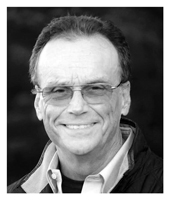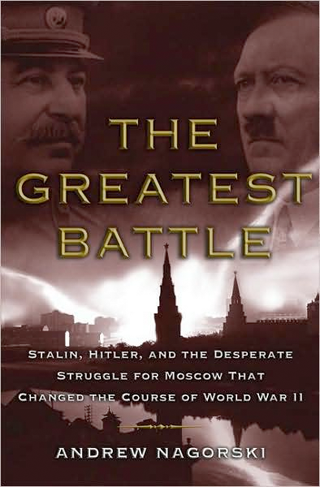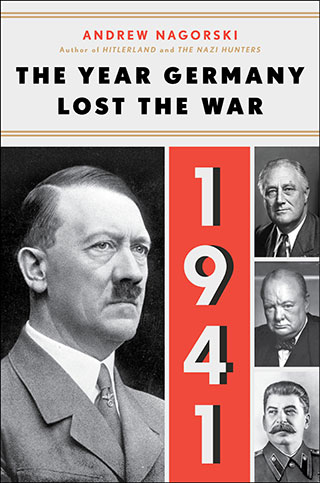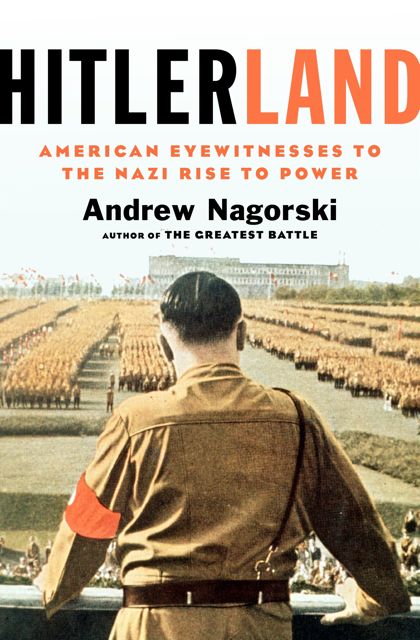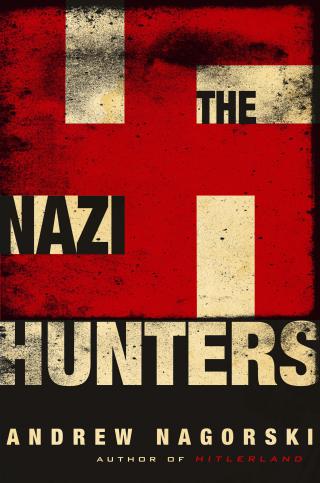MOVIES AND MEMORY
Discussions of the Holocaust often turn on two dominant issues. The first is grasping the nearly incomprehensible horrors of Nazi Germany's mass extermination campaign against Jews. The second, overshadowed by the monumental nature of the first, concerns the Holocaust's Polish setting and raises divisive questions about the history of relations between Polish Jews and Catholics not only during but also before and after the Second World War. Western popular culture, most recently Steven Spielberg's powerful film "Schindler's List," has tended to emphasize the first issue, the nature of the Nazi atrocities, while leaving the Polish setting as a fuzzy and often misunderstood backdrop.
Yet today such depictions are curiously outdated. Over the last few years, Polish Catholics and Jews have made remarkable progress in an emotionally charged debate that has moved well beyond past recriminations, bringing that backdrop into far sharper focus. For sure, this dialogue continues to generate acrimony, both between and within the two groups, and agreement remains elusive on how to present their common history in schools and to the general public. But increasing numbers of Polish Catholics and Jews, both inside and outside the country, are moving beyond the angry recriminations that had once all but obliterated previous attempts at understanding.
AN ATMOSPHERE OF RECRIMINATIONS
The debate since the Second World War over Poland's history can be reduced to two (simplified) opposing views. Polish Catholics often emphasized Poland's long record as a land of refuge for Jews, beginning with the great migrations of Jews fleeing persecution in other parts of Europe in the thirteenth and fourteenth centuries, and as a land of tolerance, where Jews were sometimes granted special privileges by Polish monarchs and nobles. Jews, on the other hand, often emphasized the steady growth of anti-Semitism in Polish society, especially when Poland reemerged as an independent state between the two world wars.
Poland's wartime experience compounded these angry disagreements. Polish Catholics stressed their own suffering at the hands of the German occupiers, arguing that, under the circumstances, they did what they could to help the Jews. They pointed to those Catholics who risked their lives to save Jews, such as Sister Matylda Getter, the nun who transformed a network of Catholic orphanages into sanctuaries for Jewish children. They also noted the efforts of the Polish underground to convince disbelieving British and American leaders, including prominent Jews, that the wholesale extermination of Polish Jews was under way and that drastic measures were needed to save them. Largely denying the existence of postwar anti-Semitism, they blamed manifestations of such attitudes on the prominent role of Jews in the secret police and other organs of the Polish puppet regime imposed by Stalin.
Jews, on the other hand, stressed the actions of Polish szmalcownicy, those who denounced or blackmailed Jews, and took special note of the hostility or indifference of many Polish Catholics. They also bitterly invoked the distressing evidence that anti-Semitism had survived in Poland even after the destruction of most of Polish Jewry: the Kielce pogrom of 1946, when a Polish mob killed 42 Jews, and the infamous 1968 "anti-Zionist" campaign launched by hard-liners within the Polish Communist Party as an excuse for new purges, which led to the coerced emigration of many remaining Polish Jews.
In this atmosphere of accusations, the Polish Communist authorities displayed the same blatant disregard for truth as they did on other issues, stirring xenophobic feelings in the hope of gaining the popular support that had always eluded them. The most egregious examples were the exhibits at Auschwitz, which only mentioned Jews as one of many groups victimized there. It is little wonder that many Jews resented what they saw as Polish efforts to "Polonize" the Holocaust, blurring the difference between the Nazi treatment of Poles and Jews and even their identities in death. Many Poles, in turn, resented what they saw as Jewish efforts to present themselves as the sole victims, refusing to acknowledge the suffering or help of others and portraying Poles as unrelenting anti-Semites.
BROADENING THE DIALOGUE
Beginning in 1987, a more open national discussion gained momentum in Poland. The new dialogue was prompted by a now-famous article by Professor Jan Blonski that appeared in the Krakow Catholic weekly, Tygodnik Powszechny. Blonski called for a "moral revolution" in dealing with the Polish-Jewish past, to "cleanse our desecrated soil", and he urged Poles to admit the virulence of their anti-Semitism in this century and accept guilt "for insufficient effort to resist" the Nazis' wartime atrocities against Jews.
The article provoked an outpouring of heated responses both praising and attacking Blonski. But the author achieved his goal of initiating a catharsis, which has since caused Polish Catholics and Jews to reexamine their past together. Blonski's article thus encouraged an increasingly expanded dialogue, one that has already gone a long way toward clearing a once poisoned atmosphere. For all their lingering suspicions, many Jews and Catholics have discovered that their views are not as mutually contradictory as they had once maintained, but rather can be used to complement each other in providing a fuller picture of a highly complex history.
The two interpretations of earlier Polish history, for example, were not necessarily at odds. For centuries, Poland was a haven for Jews, which was why its Jewish population was the largest in the world. But anti-Semitism was always present, and it grew, especially in modern times. From the late eighteenth century, when Poland was partitioned by Russia, Prussia and Austria, Polish nationalism grew narrower as Poles struggled to preserve the concept of a nation that had been declared extinct. Catholicism was a key ingredient of Polish identity, and Polish Catholicism tended to view Jews as, at the very least, suspect in their loyalties. During the brief period of independence between the two world wars, Marshal Jozef Piµsudski envisaged a multinational state and rejected chauvinist doctrines. But after his death in 1935, right-wing parties gained increasing influence and openly promoted anti-Semitic policies such as separate benches for Jewish students at some universities.
Poles have begun looking at the Nazi occupation through a growing body of articles and literature that delve into the darker aspects of a period they have traditionally associated with heroic resistance, and their understanding of Poland's wartime experience has consequently gained greater balance. Many Poles can more easily acknowledge that, although the underground Home Army issued orders to execute the szmalcownicy and others who betrayed, blackmailed or, in some cases, even murdered Jews, many went unpunished. At the same time, however, wartime Poland did not offer the Nazis an organized collaboration, as did puppet regimes in France and Slovakia, and many Poles performed acts of heroism on behalf of Jews.
Increasingly, Jewish organizations have paid tribute to such heroism. At Yad Vashem, Jerusalem's Holocaust memorial, 4,260 Poles have received the designation "righteous among the nations," the largest group to be honored in this fashion, and officials there point out that this number only accounts for documented cases. In July 1993, the Anti-Defamation League held the first conference in Warsaw honoring those Poles who rescued Jews during the Holocaust.
The new spirit of dialogue has gone a long way toward eliminating the demeaning practice on both sides of treating wartime suffering as a zero-sum game in which the admission of one group's suffering diminished the scope of another's. The memorial at Auschwitz again serves as a lesson, but this time in a positive sense. A new international council composed of both Christians and Jews has helped change the museum's signs, lectures and films to explain that 90 percent of the victims there were Jewish, even if the original camp was largely populated by Polish political prisoners, about 75,000 of whom died there.
The Auschwitz example of honoring both Jewish and Catholic victims of the Nazis, while making clear the relative dimensions of each group's tragedy, is far from unique. In the debate following the appearance of Blonski's article, Polish writers and historians stressed that the deaths of three million Polish Jews and three million Polish Catholics have to be kept in perspective. Polish Jews died as a result of a systematic mass extermination campaign, which largely succeeded; Polish Catholics were marked for enslavement, which resulted in mass fatalities as they perished in the war, concentration camps, summary executions and concerted efforts to wipe out entire villages as well as the Polish intelligentsia. Poles also died at the hands of the Soviet occupiers of eastern Poland from 1939 to 1941. But, unlike the Jews, as a nation Poles were not marked for total annihilation.
Similarly, there have been encouraging signs that many American Jews, who had traditionally been far more reticent than European Jews in recognizing the wartime losses of other groups, are open to a broader historical perspective. "There is no conflict between describing the uniqueness of the Jewish experience during the Holocaust and the inclusion of other victims of Nazism," explained Michael Berenbaum, a Georgetown theology professor. He argues that it is only in the context of the still horrible but less draconian fate of other victims, not only Polish Catholics but also Gypsies, gays and political prisoners of many nationalities, that the extent of the Jewish tragedy can be properly contrasted and understood.
Berenbaum is the director of the research institute at the Holocaust Museum, a new Washington memorial that has been nearly universally praised as a model of fairness and balance. The museum has taken great care not to present the Holocaust in a vacuum but rather in a historical context that takes account of the war in Poland and the rest of Europe as well as the persecution of non-Jews. The history of anti-Semitism throughout Europe, including in Poland, is carefully shown, but those who rescued Jews are also prominently honored.
None of this is meant to suggest that a new, amicable consensus exists on how to deal with Polish-Jewish issues. Many Poles still find it difficult to deal openly with the evidence of crimes and collaboration against Jews both during the war and in other periods. The process of honestly confronting past and present attitudes, not only of individuals but of the Catholic Church, remains painful and divisive. But the array of new books on Judaism and Poland's Jewish heritage, Polish-Israeli exchanges and joint efforts such as a commission recommending changes in each country's school textbooks, and the popularity of courses run by Warsaw's Jewish Historical Institute for schoolteachers around the country, all these developments attest to substantial progress.
THE HOLOCAUST IN CONTEXT
In time, this new spirit and understanding may seep into the broader public consciousness, allowing what began as an intellectual debate between directly interested parties to reach a larger audience. Unfortunately, Poland's increasingly open and nuanced dialogue seems to have outpaced discussions in the wider media, especially abroad. Many efforts to present Holocaust stories in popular form continue to fall short of the level of complexity required to understand the depth of the tragedy for all its victims.
Take "Schindler's List," which Spielberg himself has described as "a document, not an entertainment." For the most part, the film tells its story in isolation, as if nothing else was happening at the time. Poland, even Krakow outside the ghetto, barely exists. Uninformed viewers, which include many young Americans, may emerge from the film with no idea that the war was aimed at more than the destruction of the Jews or that there were other victims of Nazi atrocities.
Moreover, the movie's few fleeting images of Polish Catholics, such as the chilling scene of a young girl screaming with hatred, "Good-bye Jews!" as victims were herded into the ghetto, seem to suggest that the only role Poles played was to applaud Nazi terror. Despite Spielberg's simplified depiction, Thomas Keneally's book, on which the movie is based, describes the important role of a Polish Catholic who risked his life by acting as a liaison between Jews inside and outside the ghetto.
Spielberg maintains that he was only presenting "a Holocaust story," not "the Holocaust story," and that he was therefore not obliged to provide broader context or balance. Interestingly, many Polish viewers seem to agree, treating the movie as one about Germans and Jews, not Jews and Poles. Their willingness to see the movie on its own terms, with much less defensiveness than in the past, is another indication of how far their process of self-evaluation has proceeded. But many Poles may be able to fill in the context of the movie for themselves, which is not necessarily true of other viewers, particularly those in the United States.
Despite Spielberg's earnest appeals that the movie be seen as part of a broader study of the Holocaust, most viewers will indeed see it in isolation, and they may erroneously generalize from it. The movie's narrow construction therefore constitutes its primary weakness as an educational tool. Spielberg certainly could not have been expected to provide a history of the war or Polish-Jewish relations. But in a movie that lasted more than three hours some brief references to the broader conflict in Poland would only have enhanced the story's appeal.
Wherever possible, popular media and scholarship should seek to portray the Holocaust in its fullest, and therefore most accurate, setting. The considerable advances that have been made in the discussions between Polish Catholics and Jews offer a new, more ample palette with which to fill in the simpler portraits of an acrimonious past. Moreover, the fuller the treatment of the Holocaust, the more intriguing the questions that will be raised. Why, for example, did some people respond with selfless heroism during the Holocaust while others turned away or even denounced Jews? How much of the response depended on the expected punishment?
In occupied Western Europe and even within Germany itself, people who hid Jews faced possible arrest; only in Poland did those people, and even their entire families, who sheltered Jews face death. Such executions were immediate and public, aimed at instilling terror in anyone contemplating similar humane acts. A parent who was courageous enough to hide a Jew knew that such heroism meant endangering the lives of his or her spouse and children.
Detailing and understanding such macabre circumstances helps raise moral issues that reach far beyond the immediate debate over how to judge the wartime behavior of Polish Catholics. A more complete depiction of the Holocaust's setting will only help us confront the grave issues of conscience and nationalism that, unfortunately, continue to haunt us even today.
